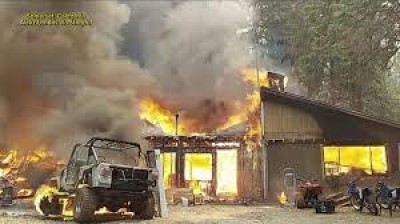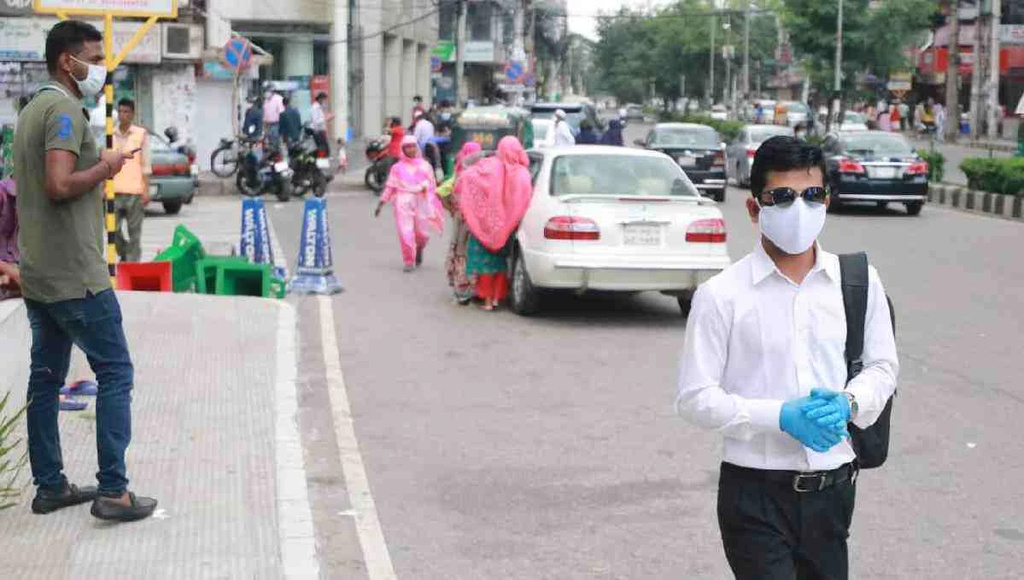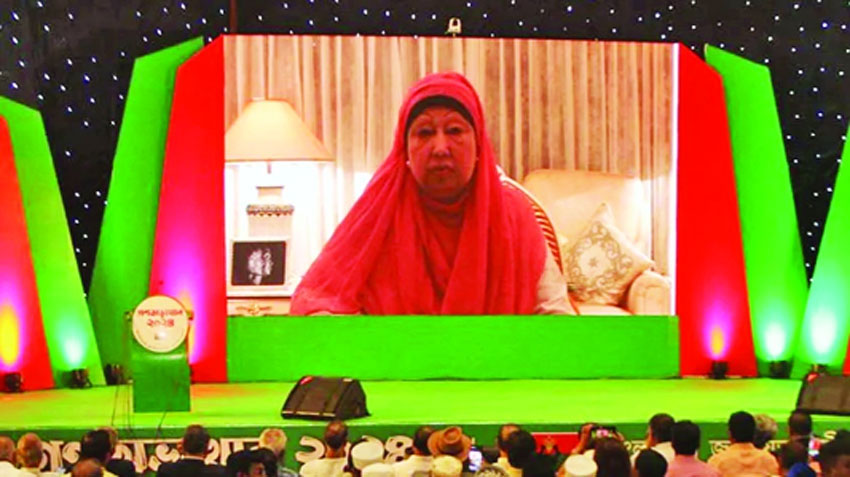- 2021-08-25 04:57:57
- LAST MODIFIED: 2025-11-03 12:07:39
Pristine Lake Tahoe shrouded in smoke from threatening fire

Photo Collected:
International Desk:
Dhaka, Aug-25,
Ash rained down on Lake Tahoe on Tuesday and
thick yellow smoke blotted out views of the mountains rimming its pristine blue
waters as a massive wildfire threatened the alpine vacation spot on the
California-Nevada state line.
Tourists ducked into
cafes, outdoor gear shops and casinos on Lake Tahoe Boulevard for a respite
from hazardous air coming from an erratic blaze less than 20 miles (32
kilometers) away.
The Caldor Fire erupted
over the course of a week into the nation’s No. 1 firefighting priority and was
“knocking on the door” of Tahoe, said Thom Porter, California’s state fire
chief. A major wildfire has not penetrated the Lake Tahoe Basin since 2007.
Tourists typically come
to swim and hike, relax along the lake’s calm shores or take their chances gambling,
not risk their lives in the face of a potential disaster.
Although there were no
evacuations ordered and Porter said he didn’t think the fire would reach the
lake, it was impossible to ignore the blanket of haze so thick and vast that it
closed schools for a second day in Reno, Nevada, which is about 60 miles (100
kilometers) from the fire.
Visitors wore masks
outdoors — not because the coronavirus pandemic, but because of the toxic air
and inescapable stench of fire. The gondola that ferries summer passengers to
the summit of the Heavenly Mountain ski area was closed until winter due to the
wildfire risk.
Cindy Osterloh, whose
husband pushed a relative in a wheelchair beneath the idled cables, said she
and family members visiting from San Diego were all on allergy medications to
take the sting out of their eyes and keep their noses from running so they can ride
out the smoke for the rest of their vacation.
“We got up and it was a
lot clearer this morning. We went for a walk and then we came back and now it’s
coming in again,” she said of the smoke. “We’re going to go and see a movie and
hopefully it clears up enough that we can go do our boat rides.”
An army of firefighters worked to contain the blaze, which has spread explosively in a manner witnessed in the past two years during extreme drought. Climate change has made the West warmer and drier in the past 30 years and will continue to make the weather more extreme and wildfires more destructive, according to scientists.
Massive plumes have
erupted in flames, burning embers carried by gusts have skipped miles ahead of
fire lines, and fires that typically die down at night have made long runs in
the dark.
Northern California has
seen a series of disastrous blazes that have burned hundreds of homes and many
remain uncontained. On Tuesday, President Joe Biden declared that a major
disaster exists in California and ordered federal aid made available in four
northern counties ravaged by blazes dating back to July 14.
The Caldor Fire had
scorched more than 190 square miles (492 square kilometers) and destroyed at
least 455 homes since Aug. 14 in the Sierra Nevada southwest of Lake Tahoe. It
was 11% contained and threatened more than 17,000 structures.
Nationally, 92 large
fires were burning in a dozen states, according to the National Interagency
Fire Center in Boise, Idaho. Although many fires are larger, the Caldor Fire
has become the top priority to keep it from sweeping into the Tahoe.
As the fire grew last
week, politicians, environmentalists, and policy makers gathered on the shore
for the 25th annual Lake Tahoe Summit dedicated to protecting the lake and the
pine-covered mountains that surround it.
With the Caldor Fire
burning to the southwest and the Dixie Fire, the second-largest in state
history with a 500-mile (804-kilometer) perimeter, burning about 65 miles (104
kilometers) to the north, the risk to the lake was top of mind.
“The fires that are
raging all around us nearby are screaming this warning: Tahoe could be next,”
said Rep. Tom McClintock, R-Calif.
The last major blaze in
the area took South Lake Tahoe by surprise after blowing up from an illegal campfire
in the summer of 2007. The Angora Fire burned less than 5 square miles (13
square kilometers) but destroyed 254 homes, injured three people and forced
2,000 people to flee.
Scars from the fire can
still be seen not far from the commercial strip where South Lake Tahoe meets
the Nevada border in Stateline, where tourists go to gamble.
Inside the Hard Rock
Hotel & Casino, cocktail waitresses in fishnet stockings and leopard-print
corsets served customers playing slots and blackjack who said they weren’t overly
concerned about the fire.
Sitting at a slot
machine near a window looking out at cars driving through the haze on Lake
Tahoe Boulevard, Ramona Trejo said she and her husband would stay for their
50th wedding anniversary, as planned.
Trejo, who uses supplemental
oxygen due to respiratory problems, said her husband wanted to keep gambling.
“I would want to go
now,” she said.
End/Dct/Int/Sma/










